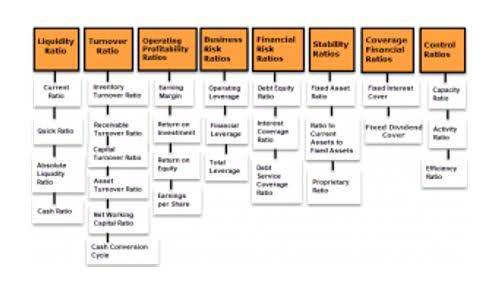
If your multiplier option is not available in the drop down list, select Other and enter the multiplier. For instance, employees who manage a team, make independent judgements, or have advanced or licensed knowledge in their field (such as lawyers or engineers) are often deemed to be exempt. This can get messy fast, and it’s a good idea to use a payroll platform that automates these calculations . This section addresses frequently asked questions about time and a half pay, covering eligibility, calculation methods, and legal considerations to provide clear and concise information. However, time and a half pay can also be applied for working on holidays and certain circumstances like taking unwanted shifts.

When Are You Required To Pay It?

Calculating holiday pay and compensation for unusual shifts involves understanding specific employment policies and labor laws that apply to these unique circumstances. Time and a half pay often Record Keeping for Small Business plays a significant role in compensating employees for working during these times. This section explores how time and a half applies to holiday pay and shifts that fall outside of normal working hours, including common scenarios and exceptions.

Are salaried employees entitled to time and a half?
In “time and a half pay,” “time” refers to the regular hours worked, and “half” signifies an additional 50% of the regular wage, resulting in the increased pay rate for overtime hours. An essential aspect of these calculations is the accurate tracking of hours worked. Truein, an AI-based face recognition attendance and time tracking solution, can be an excellent solution.

Understanding Overtime Pay at $23/Hour
Taking care of employee payroll is essential for running a successful business, and this means understanding the industry jargon inside out. That’s why knowing the answer to the question, “What is time and a half? Overtime and time and a half are almost the same, and many people confuse the two terms.
Which holidays are eligible for time and a half pay?
Nonexempt employees are included in the FLSA and must be paid time and a half for the overtime hours. All hourly employees are nonexempt unless they are employed in the abovementioned roles. These employees have annual pay below $35,568 and are usually in mid or low-level roles. However, only some employees are eligible for time and a half pay; specific rules under FSLA labor laws bring the concept of exempt and nonexempt employees.
How to Calculate Time and a Half
- Regular audits and transparent communication with employees about overtime policies also help prevent errors.
- It refers to the extra payment that you owe to your employees for any hours they have worked above the 40-hour week.
- If a worker is getting time-and-a-half for their overtime pay, they are receiving 50% more than their regular pay per hour.
- Note that my expertise is in creating online calculators, not necessarily in all of the subject areas they cover.
- This means she has completed two overtime hours above the 40-hour workweek.
- Get your overtime earnings calculated effortlessly, all without the hassle.
- This field should already be filled in if you are using a newer web browser with javascript turned on.
Hourly can be your trusted partner in tracking your team’s work hours, handling workers’ comp, and keeping compliant payroll records. Workyard provides workforce management software built for the field. In practice, however, most private-sector firms in the United States either give their employees the day off or pay them holiday pay, which is higher for working on the holiday. Calculating gross compensation for a nonexempt hourly employee who works a variable amount of hours depending what is time and a half of $23 an hour on the week at hand necessitates a unique technique. You can use OysterLink’s Paycheck Calculator to estimate your total earnings as an hourly or salaried employee in the United States (U.S.).
- He is an hourly non-exempt employee in your California-based business, which has more than 26 staff members.
- In the US, time and a half is a form of overtime compensation where employees are paid 1.5 times their regular hourly rate for hours worked beyond a standard threshold — usually 40 hours per week.
- The law around time and a half (and overtime in general) varies by country, but in the US not all employees are eligible for overtime (and, therefore, time and a half pay).
- Under the FLSA, eligible employees are given overtime pay calculated at one and a half times their regular income for any hours worked beyond 40 in a workweek.
- The federal law that regulates overtime pay and other aspects of employee compensation is the Fair Labor Standards Act (FLSA).
- If an employee’s standard hourly rate is $20, their rate for working a night shift would be $22 per hour ($20 + 10% differential).
In essence, employees who work beyond 40 hours in a single week are entitled to overtime pay. In general, overtime pay does not stack on top of holiday pay because an employee would be paid for the holiday whether they worked or not. Therefore, holiday pay hours are excluded in the number of hours worked per week, and an employee would still need to work more than 40 hours in that week to receive overtime pay. If a worker is getting time-and-a-half for their overtime pay, they are receiving 50% more than their regular pay per hour.
- This section addresses frequently asked questions about time and a half pay, covering eligibility, calculation methods, and legal considerations to provide clear and concise information.
- However, it is not unlawful to implement overtime policies that ban unauthorized overtime at your workplace.
- Most workers will encounter time and a half much more frequently than double time, as federal law doesn’t require double time pay except in very limited circumstances.
- However, most salaried professionals in executive, administrative, or professional roles are exempt from overtime requirements.
- However, some states have more stringent overtime laws than the federal government.
What Are Florida’s Overtime Laws?
- Non-exempt employees under the Fair Labor Standards Act (FLSA) are typically eligible for time and a half pay for all hours worked over 40 in a workweek.
- This is the minimum overtime rate required by federal law for hours worked beyond 40 in a week.
- While not legally required, some employers offer a shift differential, paying more for hours worked outside of a standard daytime schedule.
- But misclassifying a non-exempt employee as exempt can result in unpaid overtime, back wages, and penalties, so it’s advisable to consult with a legal professional if you’re unsure.
- All hourly employees are nonexempt unless they are employed in the abovementioned roles.
- However, time and a half pay can also be applied for working on holidays and certain circumstances like taking unwanted shifts.
The requirements and conditions for overtime pay are set in the federal Fair Labor Standards Act (FLSA). In addition, some states have even more strict rules and demand time and a half calculations on a daily basis. For this full-time employee who earns $15 per hour, their time and a half rate is $22.50 per hour, and they earned $337.50 for working 10 hours of overtime. Calculate overtime at 1.5 times your regular rate and determine your total income with overtime pay.
How does the time and a half calculator work?
You may also have to provide back pay to your staff, as well as damages and legal fees. It refers to the extra payment that you owe to your employees for any hours they have worked above the 40-hour week. The standard overtime pay is time and a half the regular hourly payment. Compensatory time off, or “comp https://coopecoban.ebol.dev/future-value-of-annuity-calculation-formulas-key/ time,” is an alternative to monetary compensation for overtime. In some cases, employees may receive comp time instead of overtime pay, where they are granted additional time off to compensate for the extra hours worked.
